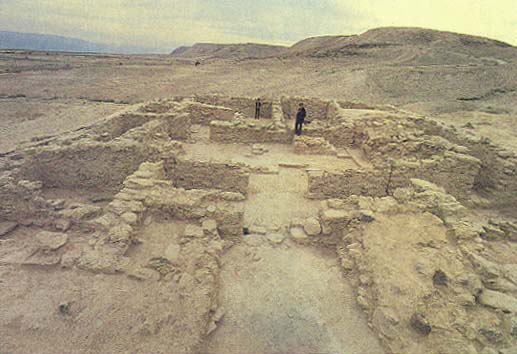Image Details

Courtesy Israel Department of Antiquities and Museums
Located some three and a half miles south of the modern city of Jericho, near the road linking Jericho with the Dead Sea (see map), Vered Jericho’s strategic position is additional evidence that the structure found there may have been a fort.
But, there is a difference that sets this fortress off from similar fortresses: two “staircases” were uncovered in the structure’s central courtyard. A worker stands on one staircase in this picture; the same staircase is seen in the right foreground of the closeup (see photograph). A second staircase is visible in this photograph along the left wall of the central courtyard, as well as against the wall at center back of the closeup. The staircases are in unusual locations, not where they would likely lead to a second story. They may have led to altars, speculates Eitan, and the structure may actually have been a beit bamah, a central cultic place for the Iron Age settlements in the area.
The structure, which was destroyed by fire, dates to the latter half of the seventh century B.C. If it was a beit bamah (Hebrew for “high place house”), it may have been destroyed as a part of King Josiah’s (640–609 B.C.) religious reforms. The Bible records that Josiah destroyed the high places from Geba to Beer-Sheva (2 Kings 23:8). Human skulls and bones Eitan found in the excavation support this grisly possibility, for the Bible tells us that Josiah “slew all the priests of the high places, who were there, upon the altars, and burned the bones of men upon them” (2 Kings 23:20).
